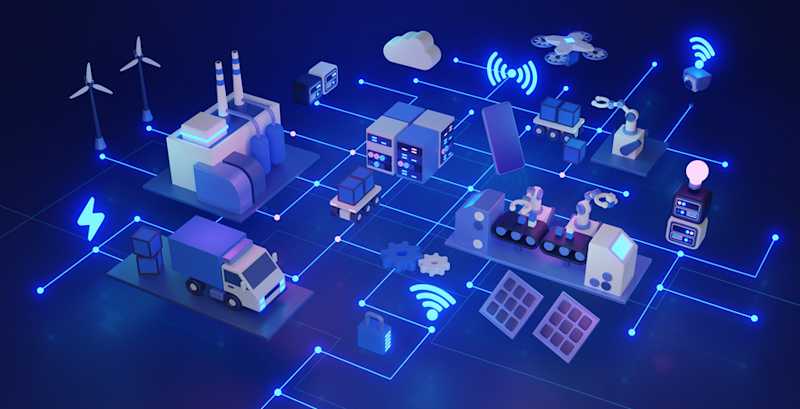Why Europe’s smart meter revolution needs patent pools
A recently published paper shows how the standardised connectivity technology enabling the transformation of the European power grid is underpinned by SEPs made available simply, efficiently and transparently through licensing programmes such as Sisvel Cellular IoT
By Joff Wild
The European electricity grid is undergoing a revolution, with traditional sources of power – coal, oil and gas – giving way to more environmentally-friendly alternatives. Alongside this, the measurement and monitoring of power usage is also experiencing rapid change. Standardised connectivity technology has enabled the roll-out of tens of millions of smart-meters, delivering significant benefits to both energy suppliers and their customers.
In a recently published paper - How Patent Pools are Powering the Smart Meter Revolution - Eric Stasik, the founder and director of independent consultancy Avikka AB, details these exciting developments and explains how standard essential patents are at their heart. In doing this, he also forcefully rebuts a series of misleading claims made about the role SEPs and patent pools play in the smart meter market, in particular ones concerning the pricing and coverage offered by licensing programmes, including the Sisvel Cellular IoT pool.
The Stasik paper is important because it is based on deep knowledge of the market and access to data points that the critics of pools have never asked for, certainly with respect to the Sisvel Cellular IoT programme. Sisvel was approached by Mr Stasik during his research and we were happy to provide him with the numbers he asked for and to answer his questions. We regret that others who have recently written about pools and smart meters did not do the same.
A read of the full Stasik paper is worth the time of anyone interested in the rapidly expanding smart meter market in Europe, but here is a summary of some of its key takeaways:
Smart meters could not exist without standardised connectivity technology. Standards essential patents read on much of this technology and licensing them is a key part of delivering smart meter products to the market. Many SEPs are made available through patent pools, including the Cellular IoT programme operated by Sisvel.
Claims that uncertainty about SEPs has hindered the development of the smart meter market in Europe are easily disproved by the numbers. Citing data from the European Commission’s Joint Research Centre and the EU Agency for Energy Regulators, Mr Stasik shows that by the end of 2021 smart meters made up over 50% of all electricity meters in Europe. That’s equivalent to more than 120 million - and it is data that is now four years old. Almost certainly, these numbers are higher now.
Sisvel Cellular IoT covers the LTE-M and NB-IoT standards. The Avanci smart meter licensing programme covers LTE-Cat 1, a completely different standard. “A license to LTE Cat-1 does not provide a license to LTE-M or NB-IoT and vice versa,” Mr Stasik writes. Therefore, warnings that there is a danger of licensor “double dipping” are highly misleading – it is almost certainly not possible.
Sisvel Cellular IoT “covers 51% of the potential stack of NB-IoT SEPs and 50% of the potential stack for LTE-M SEPs”. Sisvel has disclosed these figures publicly and explained their basis as far back as October 2024 (see here).
“Sisvel’s licensing program for 'Cellular IoT' for LTE-M and NB-IoT is not specific to smart meters or EV chargers, but is available at the rates posted on Sisvel’s website for any IoT device. Sisvel’s C-IoT program is already available for 5G devices insofar as LTE-M and NB-IoT are part of 5G,” Mr Stasik writes. “So, although Sisvel has not formally announced specific licensing programs for 5G, its licenses for NB-IoT and LTE-M cover 5G for smart meters and EV chargers (or any other IoT device) at the same prices available for 4G.”
“Sisvel’s license for LTE-M and NB-IoT for smart meters is $2/unit (and if NB-IoT only $0.66 per unit). For other cellular IoT devices, the price of a combined license for LTE-M and NB-IoT ranges from $0.08 per device to $1.33 per device (for selling prices up, to $130,” Mr Stasik states. “When it comes to EV chargers, any and every EV charger implementing NB-IoT only and costing more than $20 per device costs a mere $0.66 per charger, irrespective of the power output or additional features.”
Licensing SEPs underpinning IoT-related technology can be complex, time-consuming and expensive. However, pools such as the one that Sisvel administers greatly simplify this unavoidable process. They “provide transparency, efficiency, and ease of licensing that are vital to the success of the green transition”, Mr Stasik explains.
Smart meters measure electricity consumption and production on a per consumer basis. This gives power companies detailed insights into how their customers use electricity, so enabling them to plan accurately, identify opportunities to improve efficiency and optimise the grid for peak power generation. When assessing the cost of licensing connectivity technology, all this should be borne in mind.
“Instead of distributing misinformation which make it appear that SEP licensing represents an insurmountable hurdle to the roll out of smart meters across the EU, and that patent pools are part of the problem,” Mr Stasik concludes, “everyone truly committed to the green energy transition should work together to ensure patent pools are a vital part of delivering it.”
We could not agree more. Sisvel’s door is always open to those of good faith seeking to understand how our Cellular-IoT licensing programme works and the royalties that it charges. Please feel free to come and knock on it. We are committed to enabling the green transition in Europe and beyond. Let’s get this done.
Joff Wild is Head of Content and Strategic Communications at Sisvel
You can read Eric Stasik’s How Patent Pools are Powering the Smart Meter Revolution by clicking this link


